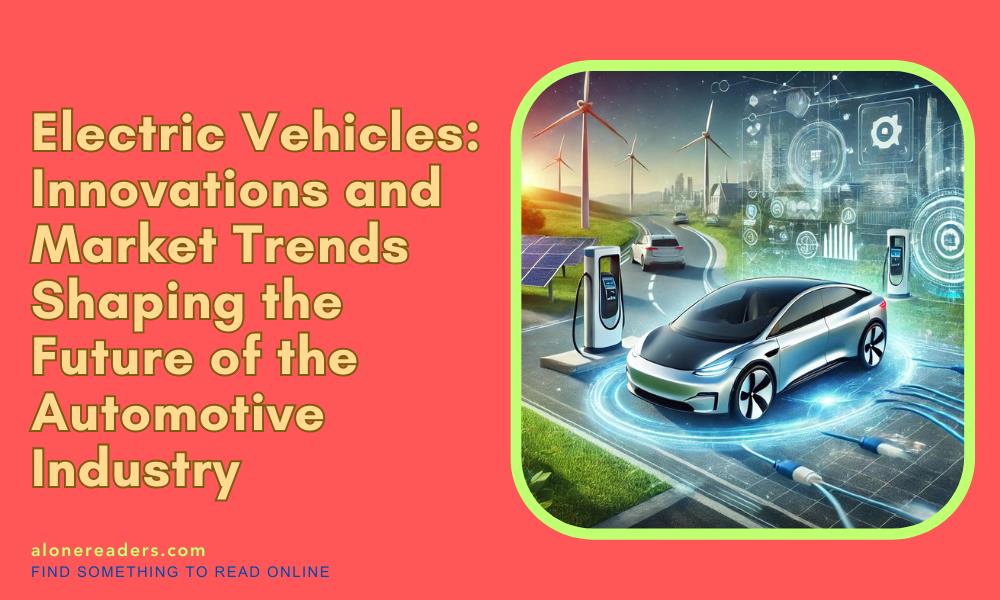
Electric vehicles (EVs) have revolutionized the automotive industry, marking a significant shift from traditional internal combustion engine (ICE) vehicles to cleaner, more sustainable alternatives. The rise of EVs is driven by technological innovations, environmental concerns, and shifting market demands. These factors are not only shaping the future of transportation but also redefining the automotive industry as a whole.
One of the most notable advancements in EV technology is the improvement in battery technology. Lithium-ion batteries, which power most EVs today, have seen substantial enhancements in energy density, charging speed, and longevity. Innovations such as solid-state batteries promise even greater improvements. These batteries are expected to offer higher energy densities, faster charging times, and enhanced safety features, making EVs more appealing to a broader range of consumers. As battery technology continues to advance, the driving range of EVs increases, addressing one of the primary concerns of potential EV buyers: range anxiety.
Another significant innovation in the EV sector is the development of faster and more efficient charging infrastructure. Companies and governments are investing heavily in building extensive networks of fast-charging stations. These stations can recharge an EV's battery to 80% capacity in just 30 minutes, making long-distance travel more feasible and convenient. Wireless charging technology is also emerging, allowing EVs to be charged without the need for physical connections. This technology could revolutionize urban mobility by enabling seamless and automated charging in parking lots and along roadways.
Autonomous driving technology is another area where EVs are leading the charge. Many EV manufacturers are integrating advanced driver-assistance systems (ADAS) and autonomous driving capabilities into their vehicles. These systems rely on a combination of sensors, cameras, and artificial intelligence to enhance safety and provide a more comfortable driving experience. Fully autonomous EVs, which can navigate and operate without human intervention, are expected to hit the market in the near future. This development could drastically reduce traffic accidents, improve fuel efficiency, and transform the way we think about transportation.
The environmental benefits of EVs are a significant driving force behind their adoption. Unlike ICE vehicles, EVs produce zero tailpipe emissions, which helps reduce air pollution and mitigate climate change. As countries worldwide set more stringent emissions regulations and promote sustainable practices, the automotive industry is under increasing pressure to transition to electric mobility. The adoption of EVs aligns with global efforts to achieve carbon neutrality and create greener urban environments.
Market trends indicate a growing consumer interest in EVs. Sales of electric vehicles have been steadily increasing, with some markets experiencing exponential growth. Governments are supporting this transition through various incentives, such as tax rebates, subsidies, and exemptions from tolls and parking fees. Additionally, the total cost of ownership for EVs is becoming more competitive with that of traditional vehicles, thanks to decreasing battery costs and lower maintenance expenses. As a result, EVs are becoming a more financially viable option for consumers.
The rise of EVs is also influencing the automotive industry's supply chain and manufacturing processes. Traditional automakers are retooling their factories to accommodate EV production, while new players in the market are developing innovative approaches to vehicle design and manufacturing. For instance, some companies are adopting modular platforms that can be used across multiple vehicle models, reducing production costs and accelerating development timelines. Moreover, the shift to EVs is driving demand for new materials and components, such as lightweight composites and advanced semiconductors, further stimulating innovation in the industry.
Despite the many advancements and positive trends, the EV market still faces several challenges. The availability and affordability of raw materials for batteries, such as lithium, cobalt, and nickel, remain critical issues. Ensuring a sustainable and ethical supply chain for these materials is essential for the long-term viability of the EV industry. Additionally, the current charging infrastructure, while improving, still requires significant expansion to meet the growing demand for EVs, particularly in rural and underserved areas.
In conclusion, the innovations and market trends in electric vehicle technology are profoundly impacting the automotive industry. Advances in battery technology, charging infrastructure, and autonomous driving are making EVs more practical and appealing to consumers. The environmental benefits and supportive government policies further bolster the transition to electric mobility. While challenges remain, the continued evolution of EV technology promises a cleaner, more sustainable future for transportation. As the automotive industry adapts to these changes, the road ahead for electric vehicles looks increasingly bright.